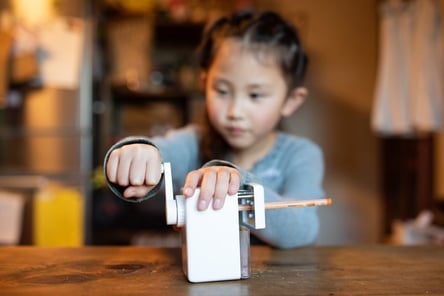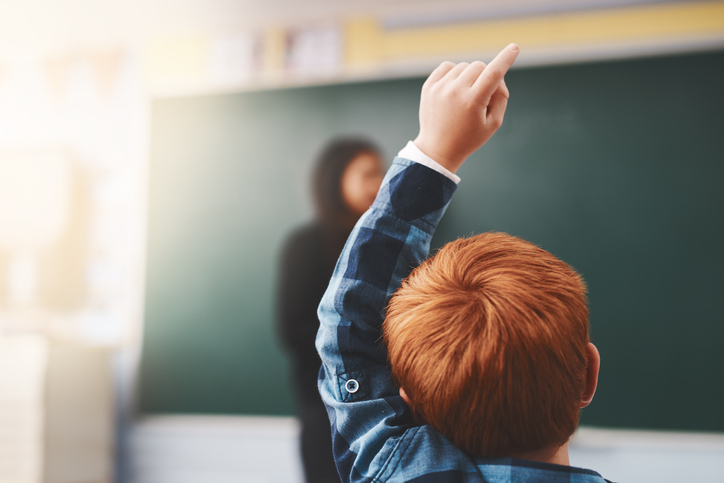Proactive Strategies for Reducing Problem Behaviors Before They Happen
Using Routines and Pre-Correction in the Classroom for Autistic Students
What is the best way to address a problem behavior? Before it happens! Procedures and routines paired with pre-correction strategies are evidence-based interventions for supporting autistic students. Instead of waiting for a challenge to arise and reacting to it, use proactive strategies to reduce opportunities for negative behaviors to occur. When you front-load lessons by pre-teaching expectations, students know exactly how to behave in the setting—and through repetition, they will be more likely to perform the skill without additional prompting or support.

Procedures and Routines
What is a routine?
A routine is simply a set of procedures for handling things such as attendance, turning in assignments, or starting a class period. It could also outline what students should do when there are minor interruptions to instruction such as how to ask to use the bathroom or when transitioning to different areas of the classroom. These procedures are not necessarily only for students, but can also be for staff. Staff members often have procedures for things like getting attention, passing out papers, and posting lesson objectives.
Why do it?
Routines and procedures help make the classroom setting predictable and safe, which can help reduce anxiety in what is already a complex environment for autistic students. The classroom especially can be incredibly overwhelming when it comes to navigating the space, social situations, and sensory inputs, all while trying to learn! Established routines let students know what to expect and what is expected from them—as a result, they are more likely to follow the procedures. What’s more, adding structure to your setting increases students’ feeling of safety. As we know through Maslow’s hierarchy, students must have their basic needs met before they are ready to engage with learning.
How should I do it?
The key to teaching a procedure is to have a plan. There are multiple routines throughout a school day to consider. There are transition routines between activities in and out of the classroom, transition to free-time activities when work is completed, bathroom routines, leaving within the setting (for things like throwing away trash, sharpening pencils, and getting supplies), and emergency transitions like a fire drill. There are also routines meant only for the teacher and routines that only students perform.
1. Have a plan:
 It’s helpful to start thinking of a step-by-step list of what you would want the behavior to look like. Think about where you want them to stand or put things and if certain times are appropriate or inappropriate to follow the routine. For example, I realized I needed to teach a pencil-sharpening routine only after I found students were sharpening during lessons, causing constant interruptions!
It’s helpful to start thinking of a step-by-step list of what you would want the behavior to look like. Think about where you want them to stand or put things and if certain times are appropriate or inappropriate to follow the routine. For example, I realized I needed to teach a pencil-sharpening routine only after I found students were sharpening during lessons, causing constant interruptions!
2. Practice:
Next, make a plan to teach the class the routine and practice, practice, practice. Depending on the routine and needs of the students, you could develop visual supports with the steps included for student reference such as using the Language Builder cards. If you’re not sure what procedure to start with, consider where students are having the most challenging behaviors—sometimes the reason is that there are no clear procedures.
Precorrection
What is precorrection?
Precorrecting is a proactive strategy that involves providing a verbal, gestural, or visual prompt shortly before an anticipated problem behavior. It can be given to a whole class, a small group, or to an individual student. It focuses on using positive language so the autistic student knows what they should be doing and, just like routines and procedures, it allows staff to reduce the likelihood of a negative behavior occurring in the first place.
Why do it?
Addressing the problem before it occurs allows you to focus on teaching the expected rather than responding to negative behaviors. If data indicates that the autistic student is struggling in a particular setting, routine, or activity, pre-correcting can be paired with other interventions like using social stories. This can be a positive way to teach a skill rather than playing catch-up after the negative behavior has already occurred.
How should I do it?
The best part about precorrection is that you can do it at any point in time. If I am getting ready to ask the whole class a question, I might raise my hand as my prompt and say, “If you know the answer, raise your hand.” However, there may be moments in your classroom when you need a more explicit teaching model.

1. Identify key times:
Start by looking for periods in the day when problem behavior is more likely to occur, even after you’ve already adjusted a routine or procedure and taught it to the class.
2. State expectations:
Processing a lot of steps can be overwhelming for autistic students. When stating the expectations, keep directions concise. Pairing the direction with some kind of a gestural or visual cue could also help ensure the students understand what is expected. This might sound like, “Before we line up, remember to walk in a straight line, with voices off and hands to self.”
3. Roleplay:
One strategy to consider in precorrection is to teach the “super student” model. Research shows that autistic students respond more effectively to imitating neurotypical peers. After stating the expectation, you might say, “Before we line up, we’re all going to have Johnny show us how.” If a peer model is not available and the autistic student is struggling with a particular skill, you could practice with them one-on-one and then pair them with a neurotypical student to model for the class, or they may be able to do it independently.
When using either of these strategies to proactively address behavior in your classroom, it is critical to reinforce students positively. That will help to increase the likelihood that students will continue to use the skill. Whether it be a formal, positive behavioral support system or behavior-specific praise such as, “I like how you waited to sharpen your pencil until after the lesson was done,” giving some kind of recognition is key to helping make your classroom run successfully.
Please tell us what has worked for you! Do you have some precorrection strategies or special routines that have helped reduce negative behaviors? We would love to hear from you in the comments.

Frankie Kietzman, Ed.S.
Frankie Kietzman is a Sales Development Associate for STAGES Learning with experience teaching as an elementary teacher, self-contained autism teacher for elementary and secondary students, autism specialist and coach for teachers dealing with challenging behaviors. Frankie’s passion for supporting children and adults with autism originates from growing up with her brother who is deaf and has autism. As one of her brother’s legal guardians, she continues to learn about post-graduate opportunities and outcomes for people with autism. Frankie has a Bachelor’s degree from Kansas State University in Elementary Education, a Master’s degree in high and low incidence disabilities from Pittsburg State University and in 2021, completed another Master’s degree in Advanced Leadership in Special Education from Pittsburg State University.




